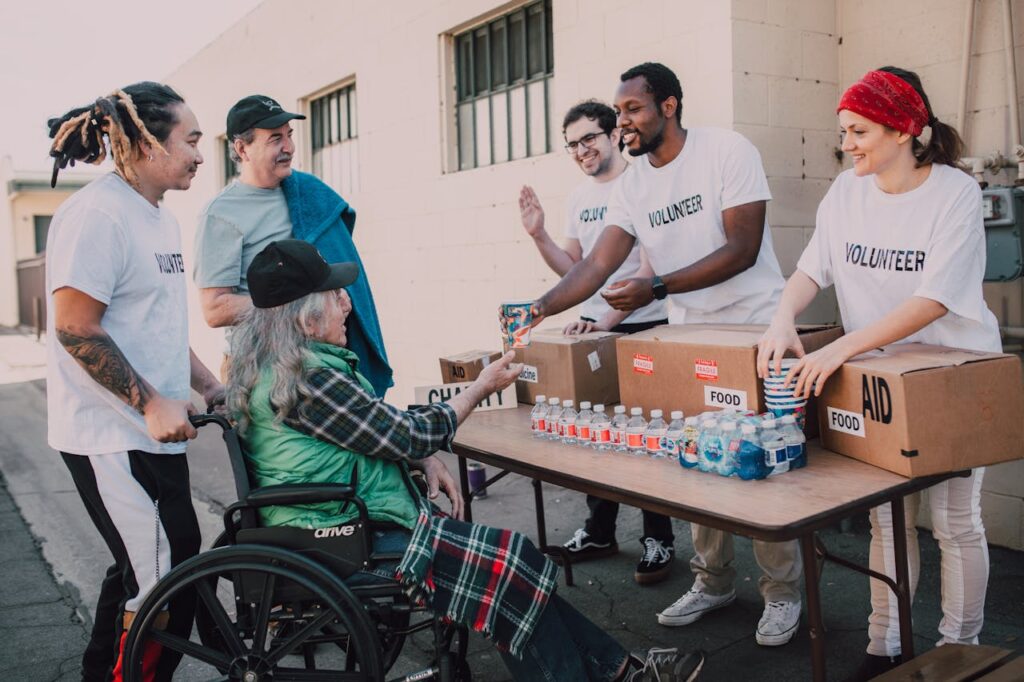Generating positive media coverage for volunteer activities requires strategic planning, compelling storytelling, and strong relationships with local media outlets. Organizations that master this skill gain valuable visibility while strengthening their volunteer programs and community connections. Research shows that media coverage can boost volunteer recruitment by up to 30% when aligned with specific campaigns, making it a powerful tool for nonprofit growth and impact. By learning to package and pitch volunteer stories effectively, organizations can build momentum that attracts both press attention and community support.
5WPR Insights
Creating Compelling Volunteer Stories That Attract Media Interest
Media outlets seek stories that resonate with their audiences and provide clear value to their communities. The most successful volunteer stories combine human interest with measurable impact. Start by identifying volunteers whose experiences highlight your organization’s mission in action. Document specific outcomes, such as number of people served or problems solved, to demonstrate tangible results.
When crafting your story, focus on personal transformation and community benefit. For example, a food bank might highlight how a retired teacher’s weekly volunteer shifts helped distribute 50,000 meals to families in need while giving her a renewed sense of purpose. These dual narratives – individual growth and community impact – create compelling angles for journalists.
Include relevant data points that validate your story’s significance. According to the Corporation for National and Community Service, volunteer service contributes approximately $187.7 billion to the U.S. economy annually. Connecting your local volunteer efforts to broader social and economic impacts helps justify media coverage.
Effective Strategies for Pitching to Local Media
Local media outlets remain powerful allies for volunteer organizations. Start by building a comprehensive media list including:
- Local newspapers and their community news sections
- Television stations, particularly their morning shows and community segments
- Radio stations, which must fulfill public interest programming requirements
- Online news sites and community blogs
- Local magazines and specialty publications
Timing plays a critical role in successful pitching. National Volunteer Week (typically in April) offers natural news hooks, but don’t limit yourself to obvious occasions. Look for connections to current events, seasonal activities, or local celebrations that make your story timely and relevant.
Craft concise, compelling pitch emails that lead with your strongest angle. Include a brief overview of the story opportunity, key statistics or outcomes, and available interview subjects. Make it easy for journalists by offering pre-written quotes, high-quality photos, and flexible scheduling options for interviews or site visits.
Engaging Volunteers in Media Outreach
Your volunteer team can become powerful advocates for media coverage when properly prepared and supported. Begin by identifying volunteers comfortable with public speaking and passionate about your mission. Provide media training covering basic interview skills, key messaging points, and proper representation of your organization.
Create opportunities for volunteers to share their stories through multiple channels:
- Speaking at community events
- Contributing to your organization’s blog or newsletter
- Participating in social media campaigns
- Representing your organization at local business gatherings
Encourage volunteers to document their experiences through photos, videos, and written reflections. This content library becomes valuable for media pitches and social sharing. According to VolunteerMatch, organizations that regularly feature volunteer stories in their communications see 25% higher retention rates.
Maximizing Coverage Through Multiple Channels
Once you secure media coverage, amplify its impact through strategic distribution. Share news stories across your social media platforms, tagging relevant parties and using appropriate hashtags. Include coverage in your email newsletters, highlighting volunteer achievements to your supporter base.
Create a dedicated press section on your website featuring media mentions, volunteer impact stories, and opportunities for press inquiries. This resource helps journalists research your organization and may generate additional coverage opportunities.
Consider these additional channels for extending reach:
- Partner organization newsletters
- Local business association updates
- Community bulletin boards
- Volunteer recruitment websites
- Professional networking groups
Measuring Impact and Success
Track both quantitative and qualitative metrics to evaluate your media outreach efforts. Key performance indicators might include:
- Number of media mentions
- Reach of coverage (audience size)
- Website traffic spikes following coverage
- Volunteer inquiry increases
- Social media engagement rates
- Community feedback and testimonials
According to research by the Points of Light Foundation, organizations that regularly secure local media coverage report 40% higher volunteer retention rates and increased community partnership opportunities.
Building Long-term Media Relationships
Successful media coverage often stems from sustained relationship building with local journalists. Maintain regular contact by:
- Following their work and engaging thoughtfully
- Providing reliable, accurate information
- Respecting deadlines and format preferences
- Offering exclusive angles or first access to major stories
- Connecting them with other community sources when appropriate
Conclusion
Turning volunteerism into press opportunities requires dedication to storytelling, relationship building, and strategic communication. Start by identifying your most compelling volunteer stories and gathering supporting data. Build relationships with local media outlets while preparing your volunteer team to serve as organizational ambassadors. Use multiple channels to amplify coverage and track results to refine your approach over time.
Take action by creating a media outreach calendar, developing a volunteer storytelling program, and establishing tracking systems for coverage impact. Remember that consistent, authentic communication about volunteer impact builds credibility with both media outlets and your community. With proper planning and execution, press coverage can become a powerful tool for advancing your volunteer program’s goals and strengthening community connections.

More PR Insights
Building Narrative Resilience During Brand Controversies
Using Internal Newsletters to Surface Press-Worthy Stories
How To Get Media Coverage For Products Without A Wow Factor